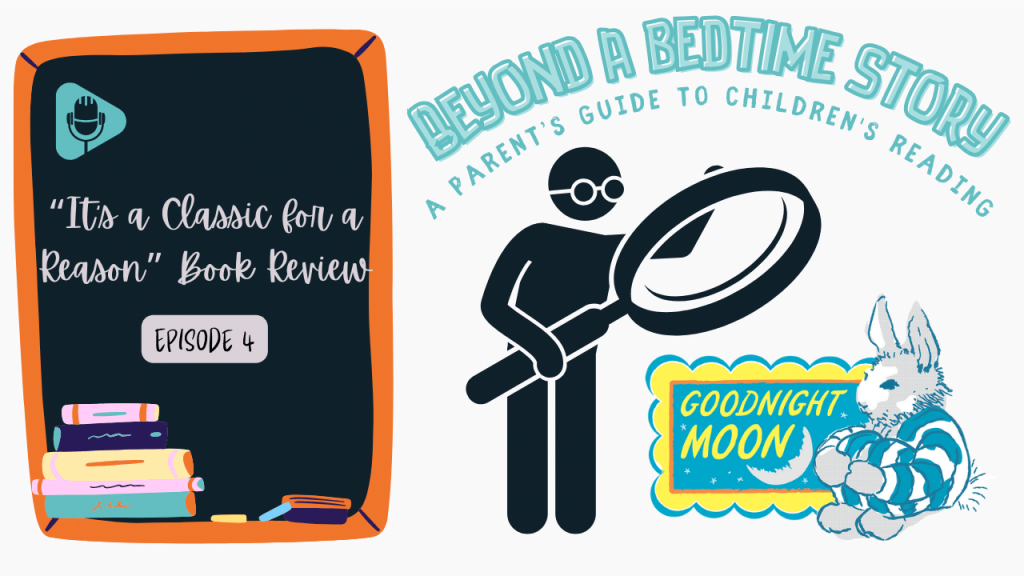“It’s a Classic for a Reason” Book Review

Hopewell Valley Student Podcasting Network
Show Name: Beyond a Bedtime Story
Episode Title: “It’s a Classic for a Reason” Book Review
Episode #4
You are listening to Beyond a Bedtime Story the podcast with your host Emily.
In this episode of Beyond a Bedtime Story the Podcast, I will provide reading prompts to engage your child in a nuanced approach to a classic picture book.
Segment 1: More Than Meets the Surface
Hi, Welcome back! I’m your host Emily, and you’re listening to Beyond a Bedtime Story: A Parent’s Guide to Children’s Reading! In this episode I will be reviewing a book that has long been a hallmark of children’s literature. I myself even know the significance of the book having read both the English and Spanish versions as a child. But, when I went to review the book, I wondered what really made this simple text so impactful.
- Article: Why Goodnight Moon Is Still A Classic 75 Years Later by Harper Collins
(Explores Goodnight Moon’s longevity)
- Popular with both parents and literary critics for “its simplicity, use of repetitive wordplay”
- Author Margaret Wise Brown emerged (in the 1930s) when picture books revolved around fairy tales that often “had a moral message and contained unusual happenings.” Yet, “Brown believed that kids would respond better to stories set in their everyday lives. She subscribed to an approach to writing known as ‘here-and-now’ storytelling” (developed by her mentor Lucy Sprague Mitchell)
- “One of its core beliefs was that young children were still discovering the world around them and could be fascinated by stories that dealt with simple, daily tasks, like saying goodnight before going to bed.”
- Brown’s text was approachable to young children
- “Brown sought to use language and narrative structures that appealed to kids”
- Felt that children were “fascinated by the rhythm and word patterns of speech”
- As reflected in the “repetitive wordplay” used w/n Goodnight Moon
- In addition to rhymes, I noticed how speech had a consistent pattern framed by words such as “little” “a” “and” “goodnight”
- Developed her ideas in alignment with feedback from children.
- Part of her research process consisted of organized “free association” sessions with kindergarteners, and she would ask them questions such as, “What is the quietest and quickest thing you can think of?” To which she often received the answer “a mouse sleeping.”
- Using this information, Brown incorporated the image of the mouse sleeping, knowing that children would resonate with that depiction
So that about wraps up our first segment. We’re going to take a quick break, but stick around, now would be a good time to grab Goodnight Moon if You Have It (maybe even sneak in a quick library run) because when we get back, I’ll reveal specific ways to prompt your child while reading the book.
Segment 2: Reading Strategies
Okay, here we go, you’ve waited long enough, hopefully, you’re back from that library run and have Goodnight Moon, because it’s time to get into the exciting stuff: reading strategies! In all seriousness, if you have the book definitely feel free to follow along as I refer to specific page numbers.
Music Credits:
- Lawrence by TrackTribe
- The Urban Groove by Hanu

